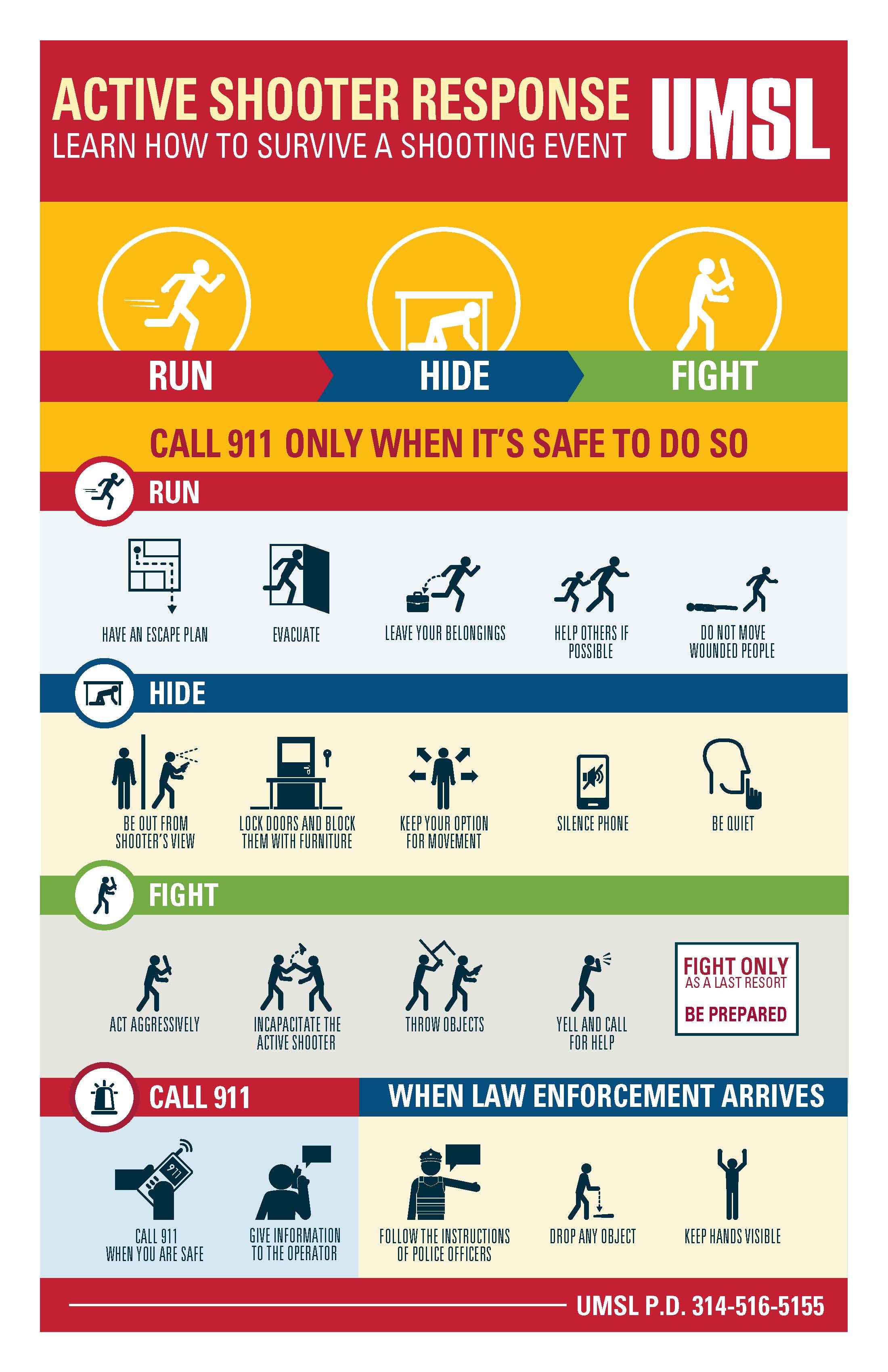Comprehensive Active Shooter Training Programs for Schools and Workplaces
Comprehensive Active Shooter Training Programs for Schools and Workplaces
Blog Article
Carrying Out Active Shooter Training: Best Practices for Creating a Safe and Prepared Area Environment
As areas challenge the upsetting truth of active shooter cases, the implementation of comprehensive training programs becomes imperative. What are the crucial elements that can transform a conventional training program into a robust model for community strength?

Comprehending the Need for Educating
In an era marked by raising events of physical violence in public rooms, comprehending the requirement for energetic shooter training has never ever been extra vital. The prevalence of mass shootings throughout different environmentsâEUR" such as institutions, workplaces, and shopping centersâEUR" highlights the seriousness for individuals and organizations to be planned for such emergencies. Energetic shooter scenarios can unfold swiftly, leaving little time for individuals to respond efficiently. Therefore, detailed training initiatives can equip participants with the expertise and skills to respond emphatically.
Training cultivates a feeling of empowerment and readiness, allowing individuals to feel even more safe and secure in their environments. The benefits of active shooter training extend past instant action; they include improving communication protocols and boosting general security steps within companies.
Trick Parts of Effective Programs
Effective energetic shooter training programs integrate several key parts that improve preparedness and action abilities. Initially, thorough educational program development is important, ensuring that training web content matters, evidence-based, and tailored to the details requirements of the company or neighborhood. This includes recognizing the dynamics of energetic shooter occurrences and the emotional influence on people involved.
Second, realistic training situations ought to be used to simulate prospective situations, permitting participants to practice decision-making and action strategies in a controlled atmosphere. These drills promote muscle memory and develop self-confidence among participants.
Third, a focus on communication methods is vital. Developing clear lines of communication amongst police, emergency situation -responders, and individuals ensures collaborated actions during an event. Normal updates and correspondence course help keep interaction pathways clear and effective.
Fourth, continuous assessment and responses devices should be integrated into the training program - active shooter training. Evaluating the effectiveness of training via individual responses and efficiency metrics permits for continual improvement
Finally, promoting a culture of security and preparedness within the neighborhood motivates caution and positive measures, guaranteeing that individuals are not only trained yet also engaged in maintaining a secure setting.
Engaging Community Stakeholders

To efficiently involve these stakeholders, it is vital to communicate the goals and advantages of the training. Holding educational sessions can assist clarify the training's function, address concerns, and outline the roles each stakeholder may play. Producing a stakeholder advising committee can help with recurring dialogue, permitting for diverse point of views and understandings to be incorporated into the training program.
Building connections with area leaders and organizations is her response also critical. Their support can improve outreach initiatives, increase engagement, and ensure that training is tailored to the special needs of the area. In addition, stakeholders can assist in distributing info and sources, strengthening the message of safety and security and preparedness.
Ultimately, engaging neighborhood stakeholders not only enhances the training campaign yet additionally cultivates a sense of ownership among citizens, leading to a more resilient and informed community efficient in reacting properly to possible hazards.
Training Delivery Techniques
Making use of a range of training distribution techniques is crucial to fit the varied learning styles and demands of individuals in active shooter training programs (active shooter training). Effective training can take numerous kinds, including talks, hands-on simulations, online components, and interactive workshops. Each method serves a special function and can boost the general learning experience

Online modules supply flexibility and accessibility, enabling participants to find out at their own rate. These can include videos, quizzes, and discussions to assess understanding. Interactive workshops urge group discussions and problem-solving, advertising teamwork and communication skills.
Integrating a combined method that combines these methods not just improves the training experience but additionally makes sure that participants are much better prepared to respond efficiently in the event of an active shooter situation (active shooter training). By resolving different learning preferences, companies can develop a much more enlightened and receptive community
Continual Examination and Enhancement
Routine analysis and enhancement of active shooter training programs are vital to keeping their relevance and performance. As threats advance, so have to the strategies and approaches used in training. Constant assessment guarantees that training web content reflects the most current knowledge on energetic shooter events, integrating lessons gained from current events and readjusting for emerging fads.
To facilitate this process, organizations should establish comments devices that consist of individual evaluations, professional evaluations, and event debriefs. Collecting information on participant performance throughout drills and workouts is essential, as it highlights locations needing renovation and educates future training sessions. In addition, engaging with police and emergency situation responders can provide useful insights right into the usefulness and applicability of training procedures.
On a regular basis arranged reviews of training materials and methods should be mandated, cultivating an environment of technology and adaptability. Organizations should additionally encourage a culture of recurring discovering, where personnel members really feel encouraged to suggest modifications based upon their experiences. By devoting to continuous evaluation and enhancement, organizations not only improve the performance of their active shooter training programs but additionally enhance their general dedication to safety and readiness within the neighborhood.
Verdict
To conclude, effective implementation of energetic shooter training necessitates a comprehensive approach that focuses on neighborhood engagement and practical simulations. By developing tailored curricula, including varied training approaches, and cultivating partnership amongst stakeholders, areas can boost readiness. Continual that site assessment and responses mechanisms are important for adjusting programs to arising risks, consequently strengthening overall security. Eventually, a dedication to continuous training and improvement grows a society of watchfulness and preparedness, guaranteeing a safer environment for all neighborhood participants.
Report this page